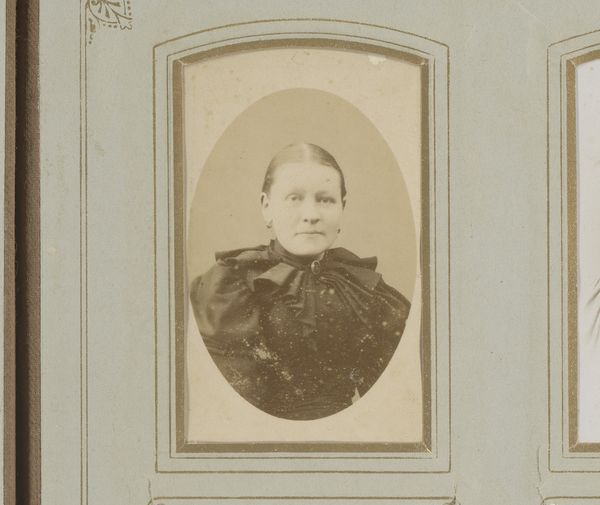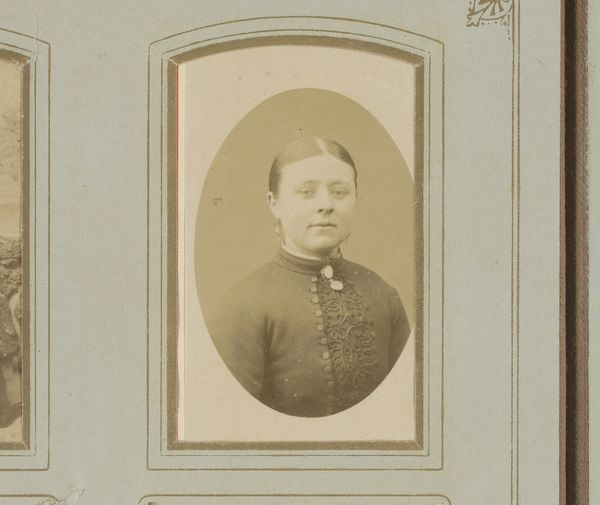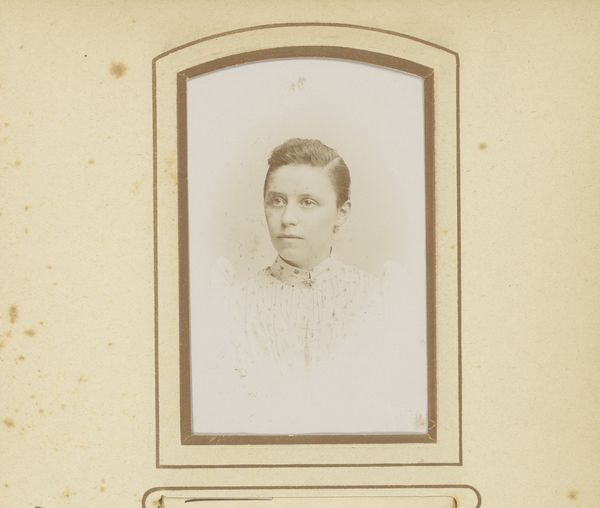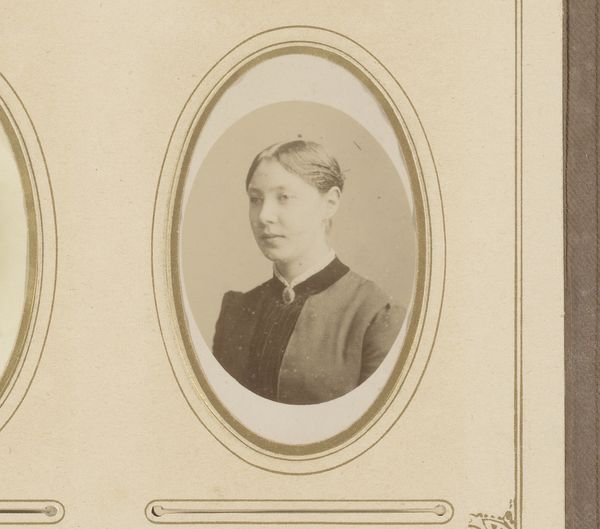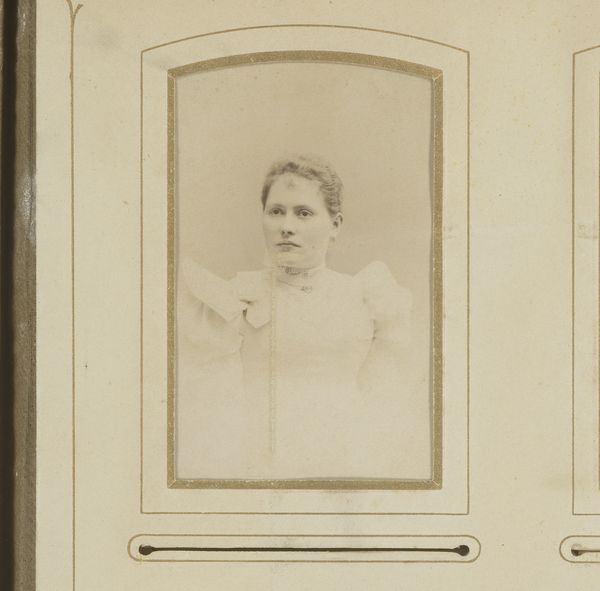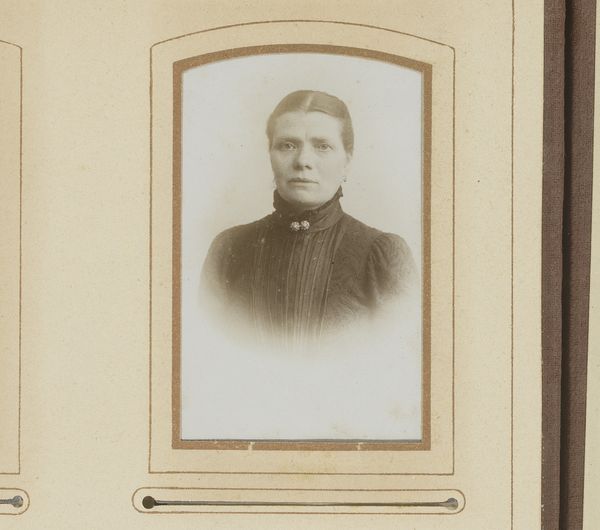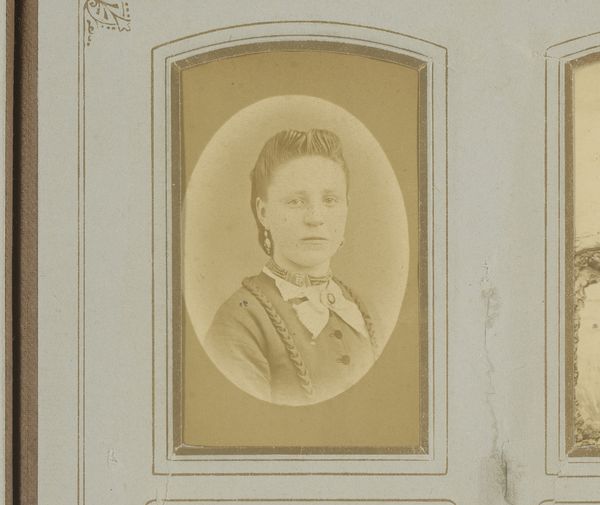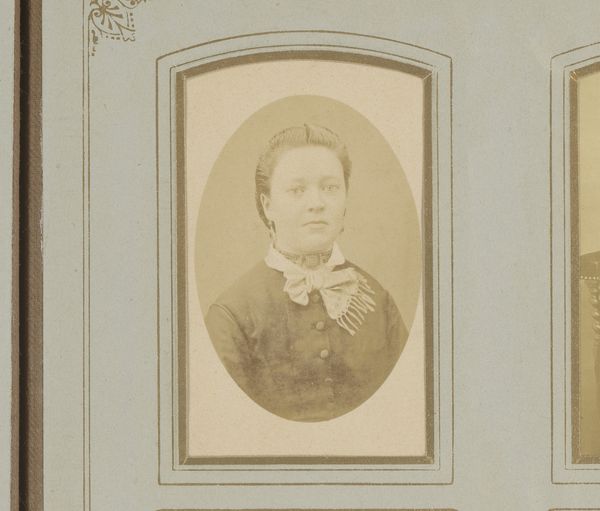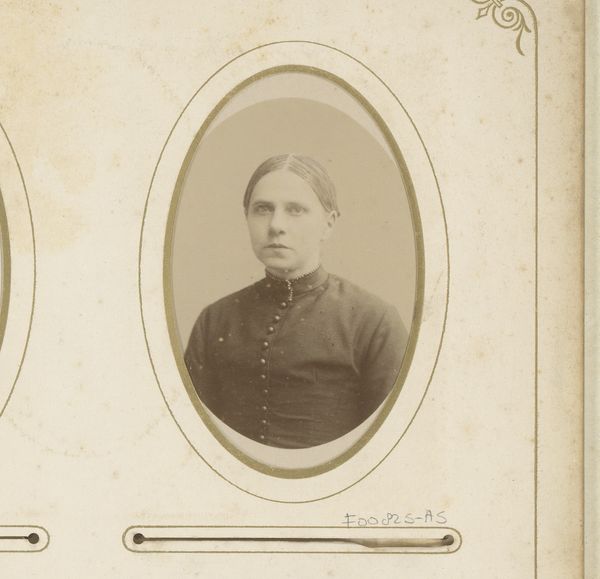
photography
#
portrait
#
photography
#
historical photography
#
19th century
#
realism
Dimensions: height 104 mm, width 64 mm
Copyright: Rijks Museum: Open Domain
Editor: Here we have a photographic portrait titled "Portret van een vrouw," made sometime between 1875 and 1915, attributed to Johannes Leonardus van der Heijden. It feels so…staged, yet also intimate, if that makes any sense? What strikes you most about this piece? Curator: It’s a fascinating look at the material culture of the late 19th century. Consider the photographic process itself. Each print required skilled labor and chemical processes – a far cry from our instant digital images. Look at the mount, the style of card. That ornamented border wasn't simply aesthetic; it added value, signaling a certain status for the sitter. Do you notice how much of the photograph there is around the edges? Editor: I hadn't thought about that, but you’re right. What was the purpose of the card surrounding it? Curator: These mounts served multiple functions. They protected the delicate photographic emulsion and also provided a surface for branding by the photographer, but more importantly, the card enabled its circulation in the society. People could display these easily on mantlepieces, exchange as gifts, and put them in albums to construct family albums to signal belonging. It becomes an artifact deeply enmeshed with social rituals. Editor: So it’s less about the woman herself, and more about what the photo *represented* in society? Curator: Exactly! While we may never know her story, her image, carefully crafted through specific material choices, becomes a symbol of her time, class, and participation in the burgeoning consumer culture around photography. Editor: I see! By considering the materiality – the mount, the process, its function as an object – we gain insight into its role beyond just being a portrait. Curator: Precisely! It reminds us that art, in all its forms, is inextricably linked to its material conditions of production and reception. Editor: This has really broadened my understanding. Thank you. Curator: And you’ve highlighted how a seemingly simple image can reveal so much about the society that created it.
Comments
No comments
Be the first to comment and join the conversation on the ultimate creative platform.
